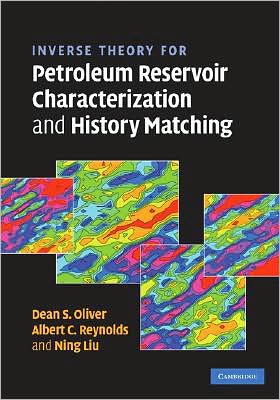

 |

|

Sold Out
Book Categories |
Preface xi
1 Introduction 1
1.1 The forward problem 1
1.2 The inverse problem 3
2 Examples of inverse problems 6
2.1 Density of the Earth 6
2.2 Acoustic tomography 7
2.3 Steady-state 1D flow in porous media 11
2.4 History matching in reservoir simulation 18
2.5 Summary 22
3 Estimation for linear inverse problems 24
3.1 Characterization of discrete linear inverse problems 25
3.2 Solutions of discrete linear inverse problems 33
3.3 Singular value decomposition 49
3.4 Backus and Gilbert method 55
4 Probability and estimation 67
4.1 Random variables 69
4.2 Expected values 73
4.3 Bayes' rule 78
5 Descriptive geostatistics 86
5.1 Geologic constraints 86
5.2 Univariate distribution 86
5.3 Multi-variate distribution 91
5.4 Gaussian random variables 97
5.5 Random processes in function spaces 110
6 Data 112
6.1 Production data 112
6.2 Logs and core data 119
6.3 Seismic data 121
7 The maximum a posteriori estimate 127
7.1 Conditional probability for linear problems 127
7.2 Model resolution 131
7.3 Doubly stochastic Gaussian random field 137
7.4 Matrix inversion identities 141
8 Optimization for nonlinear problems using sensitivities 143
8.1 Shape of the objective function 143
8.2 Minimization problems 146
8.3 Newton-like methods 149
8.4 Levenberg-Marquardt algorithm 157
8.5 Convergence criteria 163
8.6 Scaling 167
8.7 Line search methods 172
8.8 BFGS and LBFGS 180
8.9 Computational examples 192
9 Sensitivity coefficients 200
9.1 The Frechet derivative 200
9.2 Discrete parameters 206
9.3 One-dimensional steady-state flow 210
9.4 Adjoint methods applied to transient single-phase flow 217
9.5 Adjointequations 223
9.6 Sensitivity calculation example 228
9.7 Adjoint method for multi-phase flow 232
9.8 Reparameterization 249
9.9 Examples 254
9.10 Evaluation of uncertainty with a posteriori covariance matrix 261
10 Quantifying uncertainty 269
10.1 Introduction to Monte Carlo methods 270
10.2 Sampling based on experimental design 274
10.3 Gaussian simulation 286
10.4 General sampling algorithms 301
10.5 Simulation methods based on minimization 319
10.6 Conceptual model uncertainty 334
10.7 Other approximate methods 337
10.8 Comparison of uncertainty quantification methods 340
11 Recursive methods 347
11.1 Basic concepts of data assimilation 347
11.2 Theoretical framework 348
11.3 Kalman filter and extended Kalman filter 350
11.4 The ensemble Kalman filter 353
11.5 Application of EnKF to strongly nonlinear problems 355
11.6 1D example with nonlinear dynamics and observation operator 358
11.7 Example - geologic facies 359
References 367
Index 378
Login|Complaints|Blog|Games|Digital Media|Souls|Obituary|Contact Us|FAQ
CAN'T FIND WHAT YOU'RE LOOKING FOR? CLICK HERE!!! X
 You must be logged in to add to WishlistX
 This item is in your Wish ListX
 This item is in your CollectionInverse Theory for Petroleum Reservoir Characterization and History Matching
X
 This Item is in Your InventoryInverse Theory for Petroleum Reservoir Characterization and History Matching
X
 You must be logged in to review the productsX
 X
 X

Add Inverse Theory for Petroleum Reservoir Characterization and History Matching, This book is a guide to the use of inverse theory for estimation and conditional simulation of flow and transport parameters in porous media. It describes the theory and practice of estimating properties of underground petroleum reservoirs from measuremen, Inverse Theory for Petroleum Reservoir Characterization and History Matching to the inventory that you are selling on WonderClubX
 X

Add Inverse Theory for Petroleum Reservoir Characterization and History Matching, This book is a guide to the use of inverse theory for estimation and conditional simulation of flow and transport parameters in porous media. It describes the theory and practice of estimating properties of underground petroleum reservoirs from measuremen, Inverse Theory for Petroleum Reservoir Characterization and History Matching to your collection on WonderClub |